Ground Reports
'Tagda Raho': Inside India's Special Forces Fitness Regime With 3,000-Year-Old Weapons
Adithi Gurkar
Aug 28, 2025, 12:18 PM | Updated Oct 09, 2025, 09:11 AM IST
Save & read from anywhere!
Bookmark stories for easy access on any device or the Swarajya app.
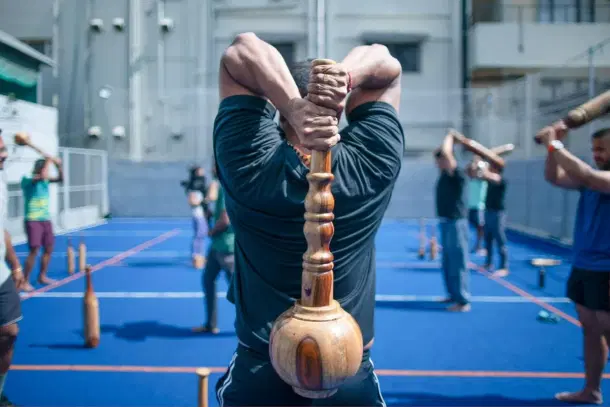
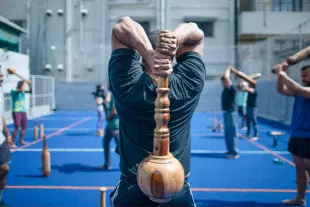
On a crisp morning in urban India, as millions settle into their air-conditioned gyms clutching protein shakes and scrolling through fitness apps, Rishabh Malhotra stands in a sunlit space wielding what appears to be an ancient weapon.
A Hanuman Gada (wooden club) cuts through the air with practised precision, its weighted head demanding engagement from every muscle in his body.
To the untrained eye, it looks like a relic from the past, but in his hands it represents something far more radical: the revival of India's forgotten strength-training traditions.
What began as Malhotra's personal quest to recover from a debilitating injury soon turned into a movement powerful enough to capture the imagination of the country. But the journey to that transformation began with devastating loss.
A decade ago, Malhotra embodied the millennial fitness ideal. He participated in ultra-endurance events, cycled from Kashmir to Kanyakumari and across the European continent, his life steeped in the pursuit of physical excellence. Then came the accident that changed everything, a condition called brachial neuritis that rendered his left arm 75 percent paralysed.
"At that time, I tried multiple rounds of physiotherapy, walked underwater, and basically did everything I could to restore arm function, but nothing worked," he recalls. The only medical option presented was reconstructive surgery with a mere 20 percent chance of complete recovery. "A chance I decided was too risky to take."
When conventional Western rehabilitation failed him, Malothra turned to something far older, and profoundly Indian.
What caught his attention this time wasn't the familiar landscape of treadmills and dumbbells, but rather traditional Indian equipment that had been training warriors and wrestlers for more than a millennium. He discovered the three basic pillars of Indian strength training: "First was the Hanuman Gada which is the most recognised one, second the Mudgar, a club-like equipment, which is also fairly well recognised, and third the Santola which is also known as the traditional Indian barbell and is used for conditioning, and high volume movements that target the arms and the core."
The revelation led Malhotra down a path that would not only restore his arm but revolutionise his understanding of fitness itself.
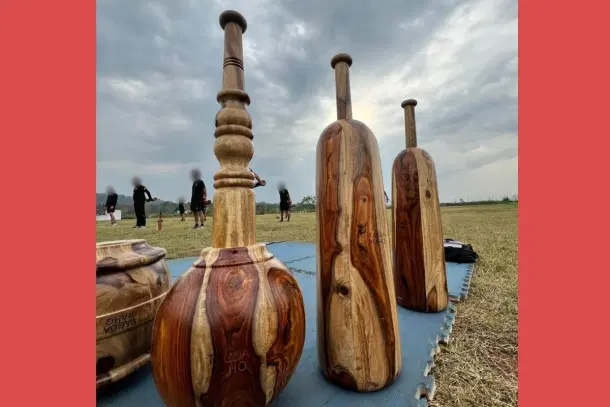
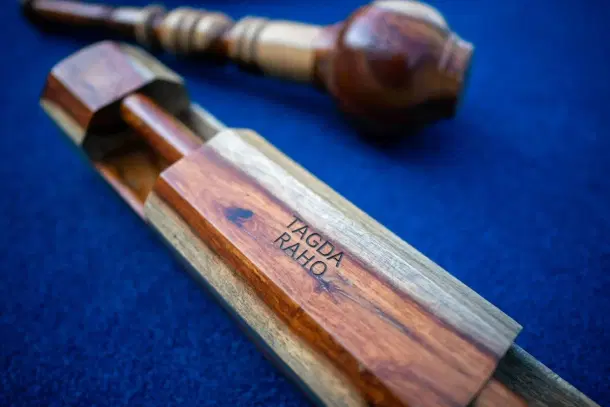
The Hidden Geography of Ancient Strength
As Malhotra delved deeper into these traditional methods, his journey across the subcontinent revealed a rich, living tradition that most Indians had forgotten existed in their own backyards. He discovered something remarkable: the very weapons that could heal him were hiding in plain sight, all across India.
"Contrary to the popular notion that Punjab and Haryana are its only strongholds, this ancient weaponry has a far wider presence across India. Uttar Pradesh, for instance, remains a major hub. During my travels I found that Kashi still houses thriving akhadas over 200 years old. Maharashtra too has a vibrant tradition, where pehlwans command great respect, kushti enjoys immense popularity, and the traditional equipment continues to be preserved with pride. Karnataka has its own rich legacy, where the akhadas, locally known as garadis, have endured; even in a bustling city like Bengaluru, century-old garadis still survive. In the South, mudgars are known as karlakatti and remain integral to Kalari training pits in Kerala, used for strengthening and conditioning the body," Mr Malhotra states.
Like linguistic evolution across regions, the designs have changed according to geography. "What is predominantly used in U.P is called the Jori, a form of Mudgar essentially a single-hand club. As one moves toward Maharashtra and then Karnataka, the shape shifts slightly, becoming something between a Mudgar and a Gada. Within every state and city one journeys to, one would find a variation," Malothra explains.
"Someone would see a particular form of the weapon in one part of the country, carry the knowledge elsewhere, and then adapt it to the wood, movements, and fighting styles best suited to their own region. This organic evolution, unfolding over thousands of years, meant that while the equipment thrived in many forms, there was little by way of standardisation."
Yet, what united these variations was not merely culture but physics itself.
"The fundamental distinction between Indian and Western training systems lies precisely here, in physics, not philosophy. Indian equipment differs significantly from dumbbells or barbells: where the latter distribute weight evenly on both sides, Indian tools concentrate weight on a single end. This activates the lever principle with every lift and swing. It was through this realisation that I began experimenting, focusing on my arm in an effort to save it."
But accessing this ancient wisdom proved more challenging than Malhotra had anticipated. Despite being in India, the birthplace of these tools, procuring quality traditional equipment felt like archaeological excavation.
"When I realised that the world's oldest strength-training equipment, Indian in origin, was not something one could simply buy in India itself, it bothered me deeply," he emphasises. That frustration only grew when he attempted to make one himself. "Forget purchasing, even creating and customising the equipment was a struggle. First, you had to track down someone with the right carving machine, then source the perfect piece of wood, and finally hope the craftsman had the skill to shape it to the desired weight."
Even after finally acquiring the equipment, another hurdle emerged: learning how to use it. "The only places where one could still find instruction were the akhadas, but even there the training was narrowly focused on kushti. The practice revolved around just two or three movements, targeting the elbows and shoulders, joints that are critical for wrestling, while the broader possibilities of the equipment remained unexplored."
For someone with arm paralysis, two movements weren't enough.
The Modern Revival of Ancient Weapons
Undeterred, Malhotra went on to design a comprehensive training programme with Indian gadas and mudgars, one that accomplished what Western medicine could not: a complete recovery of his arm in just four months. "That experience opened my eyes to the immense benefits of traditional Indian strength training," he recalls. Yet it also raised a troubling question. "While yoga has achieved international recognition and become a household practice across India, why has Indian strength training, and the unique equipment that defines it, not received the same acclaim?"
The answer, he realised, lay in accessibility and adaptability. Traditional equipment, built for use in akhadas, was rigid and unchanging. "The first piece I had made was crafted in the same way as those used by wrestlers, but that meant I had no flexibility. I couldn't reduce or increase the weight to suit different exercises. I was stuck." That limitation sparked the idea that would change everything. "This is when I decided to make them modular."
After closely studying regional variations across the country, Malhotra reimagined the Gada and Mudgar with a modern twist, designing versions where weights could be adjusted and grips modified. "The engineering changes were simple," he explains, "but while the core design remains faithful to its millennia-old history, these tweaks made the equipment relevant for today's world. Now they're easier to carry and transport, you can even dismantle an entire Gada or Mudgar and fit it into a backpack."
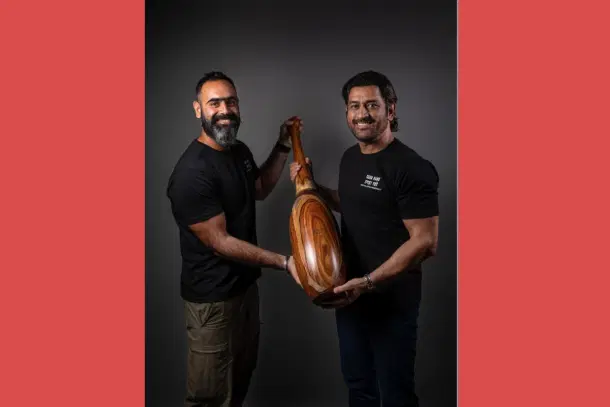
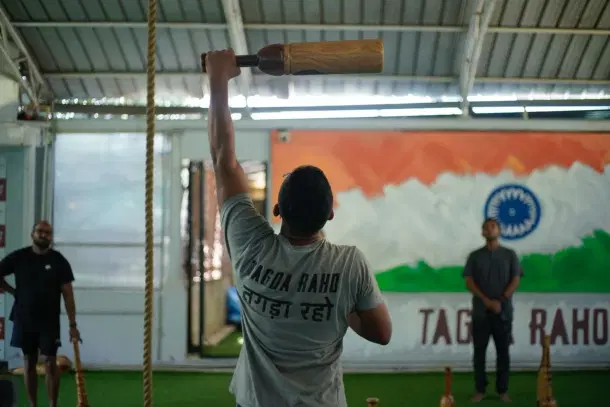
Malhotra's expertise soon drew the attention of the National Cricket Academy, the BCCI, Pro Kabaddi's Haryana Steelers, and most notably, the Indian Army's elite 12 and 21 Para Special Forces. For someone who comes from a long line of servicemen ("My great-grandfather was in the Army, my grandfather in the Air Force, and my father too served in the Army; the forces run in my blood"), the chance to train the nation's most elite warriors felt less like coincidence and more like destiny.
Even the brand name carries the weight of legacy. Tagda Raho, meaning "stay tough" or "stay strong", is a salutation used in the Assam Regiment, one Malhotra had grown up hearing. "It always stayed with me," he recalls.
The collaboration with India's special forces revealed just how deeply ancient training methods could align with modern warfare needs. "We were approached by the 21 Para and 12 Para Special Forces to design a tactical strength programme," Malhotra recalls. "We lived with the battalions, trained alongside the troops, and studied their mission profiles to understand precisely what these men required. What struck us most was the toll their operations took, many soldiers carried lingering injuries from the sheer intensity of their missions.
"By reintroducing traditional Indian equipment, we were able to give the soldiers a way of training that actually reduced their injuries," Malhotra explains. "Western gym equipment tends to isolate muscles and work on them individually. In the Indian system, however, muscles are isolated only during rehabilitation, when they need healing. Otherwise, the body is trained to fire as a single unit. That shift not only prevents injuries but also builds greater flexibility and agility."
The historical context made the logic clear. "If you look at the evolution of the gada and mudgar, it begins with the battlefield," Malhotra explains. "Warriors once fought with swords weighing seven to eight kilos, carried equally heavy shields, and wore body armour that added another burden. Altogether, a soldier in the medieval era would be moving with 20 to 30 kilos on his body for an entire day. That demanded immense strength, and to build it, they turned to these heavy wooden tools. Over time, the practice filtered into wrestling, where the first point of combat is the grip. Mudgars, in particular, were used to condition and strengthen the arms for precisely that."
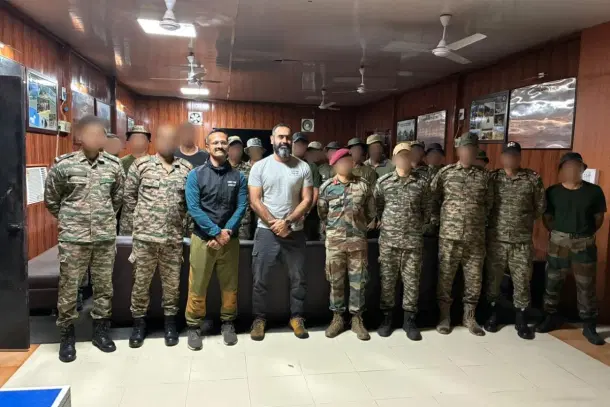

When asked if the special forces turned to traditional methods because modern systems fell short, Malhotra was quick to clarify: "The special forces never approach training from a place of lack. Their mindset is always about adding more, about making their regimen more complete. In our early discussions, and later during on-site training, it became clear that the Indian method offered exactly that. Unlike conventional weightlifting, where one stands in place and lifts up and down, the Indian approach relies on swinging weights. This subjects the body to constantly changing force vectors, one moment the weight pulls you in one direction, the next you're pulling it back. That dynamic difference between swinging and lifting is precisely what sets the two philosophies apart."
He illustrates the concept with a simple image: "Think of swinging an axe at a tree. It's never just about grip strength, you need your whole body to move in coordinated, explosive motion to land the strike. That, in essence, is how a soldier operates. He must climb and descend hills, carry heavy loads, rappel down ropes from helicopters, run, take cover, fire, and control his heartbeat, all within the span of a minute. This training format mirrors those demands, forcing the body to adapt to shifting loads. The weight is never fixed in one isolated position; it moves constantly, left to right, top to bottom, just like the chaos of battle."
The results spoke for themselves. "The first and most visible improvement was in grip strength," Malhotra notes. "For a soldier, grip is everything, whether it's holding and firing a weapon, climbing and pulling up on a rope, or engaging in unarmed combat. But grip isn't just about how tightly you can hold something for a few seconds; it's about how many times you can repeat that action without lactic acid build-up causing cramps. Our training sessions with the troops often stretched to four hours a day, during which we systematically conditioned their grip. The payoff was clear, greater firing accuracy and fewer injuries over time."
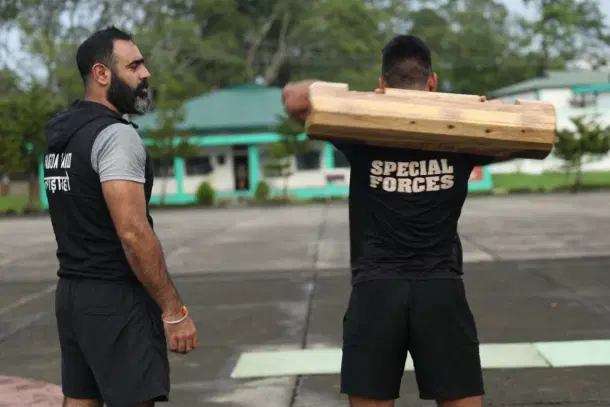
Mobility gains proved just as transformative. "The second major area we worked on was mobility," Malhotra explains. "Special Forces troops train with such intensity that overtraining often leaves their bodies stiff. In most Western formats, strength is built at the cost of flexibility, the stronger you get, the more restricted your movements become. The Indian system is different. Born on the battlefield, it develops strength without sacrificing mobility. With gadas, mudgars, and santolas, the troops began noticing real changes, their shoulders and upper backs opened up, stiffness reduced, and their range of motion expanded."
The breakthroughs with the Special Forces made Malhotra think beyond the battlefield. The same issues (stiffness, mobility loss, recurring injuries) were everywhere. "Today, football turfs and badminton courts are coming up across the country, which is fantastic," he says. "But the training people rely on is still very one-dimensional, leg presses, weight machines, linear gym work. They aren't wrong, but they're incomplete. Neither in sport nor in combat do you move in just one plane of motion. You're always shifting direction, speed, and load. That's why gadas, mudgars, and santolas are so relevant, they condition the body for that dynamism."
What began as an exploration of mobility and injury prevention soon grew into something larger, the chance to redefine how traditional Indian equipment was perceived. "For the longest time, gadas and mudgars were dismissed as relics of the akhadas, meant only for pehlwans," Malhotra recalls. "That changed when I worked with the BCCI and introduced them into cricket training. The subsequent collaboration with the Special Forces only deepened the realisation that these tools had a much wider role to play."
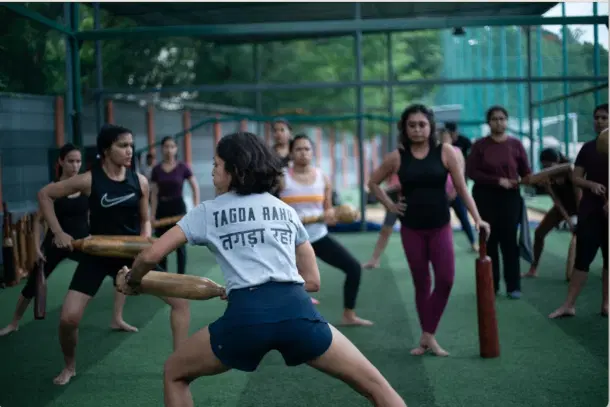
Perhaps even more significantly, Tagda Raho has opened the doors of these ancient practices to women, long excluded from akhada training. Traditionally, the system was bound by the principles of brahmacharya. "It was never about being against women," Malhotra clarifies. "But the discipline of the akhadas restricted interactions, which meant only young boys were inducted early on to build themselves physically and mentally. The result was that half the country, women, never had access to this form of training or its benefits. Over time, a myth also grew that women don't enjoy strength training. But at Tagda Raho, we've seen the opposite, when given the right space, they not only take to it, they thrive."
The revival of this ancient format has transcended borders, with Tagda Raho now shipping gadas and traditional equipment to North America (USA and Canada), Europe, and parts of the Southern Hemisphere including Australia and New Zealand.
At the brand's centers in Bengaluru and Pune, the philosophy extends beyond equipment to environment. These are sacred spaces deliberately devoid of machines or barbells—the only instruments of strength training are Indian. Each center maintains at least one side open to the elements, and all feature sandpits where portions of the training unfold on natural ground rather than floors or mats. Heavy ropes are integral to the experience, used both for pulling sandbags and climbing exercises, connecting practitioners to the raw, elemental nature of traditional training.
For Malhotra, these weapons embody what he calls "the OG Indian workout", a system whose strength lies in its adaptability across ages and backgrounds. At Tagda Raho centres, this inclusivity is evident: the youngest practitioner is just eight, while the oldest trains well into their seventies. Few fitness ventures can claim both MS Dhoni's investment and endorsement and the Prime Minister's praise on Mann Ki Baat. Tagda Raho can.
Yet despite this recognition and growth, Malhotra's philosophy isn't about replacing one system with another—it's about integration and choice. "One form of fitness should never be pitched against the other," he explains. "Both formats can be complementary. For me personally, the main principle behind fitness is consistency, and I can only stay fit if I enjoy what I'm doing—which, in this case, is the Indian way."
Adithi Gurkar is a staff writer at Swarajya. She is a lawyer with an interest in the intersection of law, politics, and public policy.





